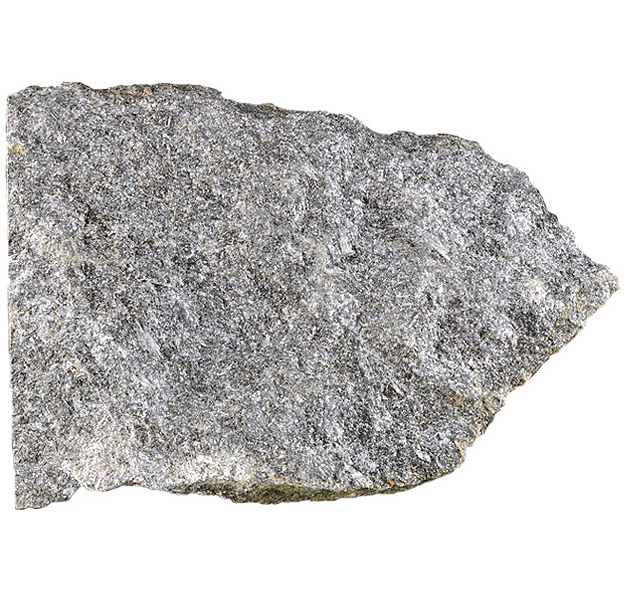
Fact sheet
This metamorphosed rock from Knockvologan, Ross of Mull, Scotland, was first deposited as a siltstone in the Precambrian, then buried and subjected to regional metamorphism at least once. During the Caledonian orogeny, around 420 million years ago, the Ross of Mull granite was intruded and the roof of the magma chamber is preserved in this area. The magma body rose through the crust, breaking up the roof and rising towards the surface. This particular rock was a part of the roof that remained and has been preserved, surrounded by the solidified Ross of Mull granite body. The heat from the granite re-metamorphosed the rock to a hornfels, overprinting the earlier mineralogy although some of the earlier shapes remain as pseudomorphs (minerals replaced in situ).
In thin section the rock is dominated by quartz and feldspar, with its characteristic alignment defined by muscovite and biotite micas. Blades of sillimanite are present in some bands. The thin section also contains excellent examples of the rare mineral jimthompsonite, which appears to have replaced (pseudomorphed) earlier porphyroblast mineral in this rock. Jimthompsonite is a pyribole, with a structure similar to micas and amphiboles.
The United Kingdom Virtual Microscope (UKVM) collection consists of igneous, sedimentary and metamorphic rocks from around the UK.
It is intended as a teaching resource, helping to tell the story of the common rock types and how they form, and reflecting the history of the UK at the margins of the continent of Europe. The collection is a series of teaching sets, for example igneous rocks from the North Atlantic Igneous Province and SW England; high-temperature metamorphic rocks from Scotland and low-temperature metamorphic rocks from Wales; and sedimentary rocks, including English limestones and sandstones.






